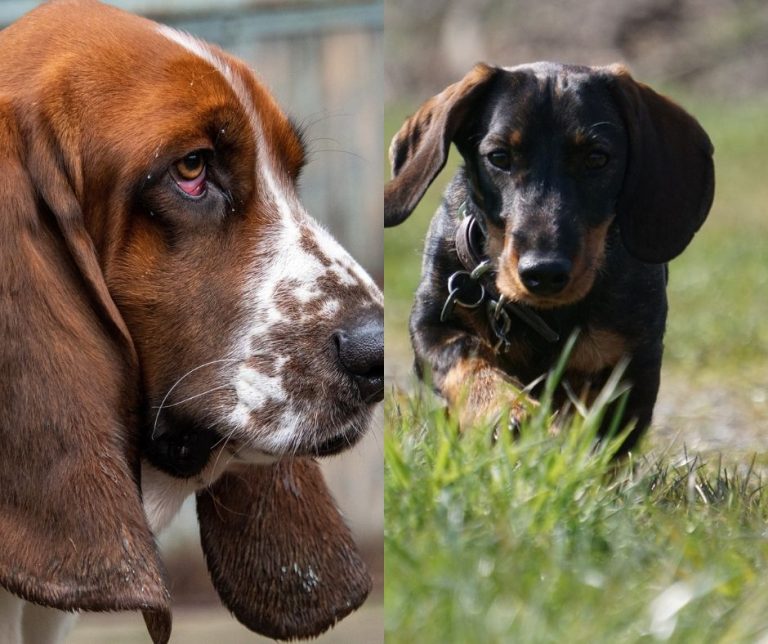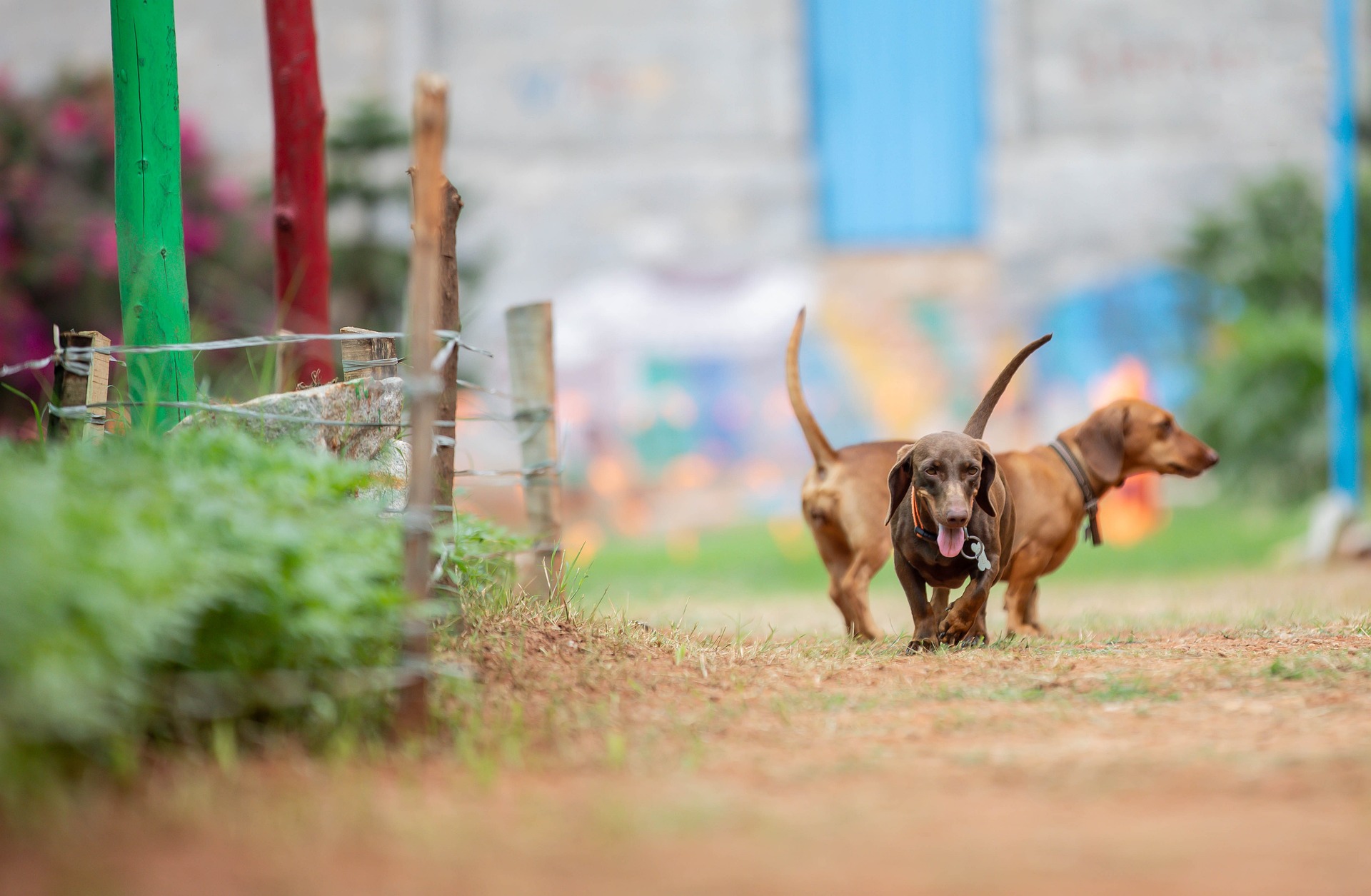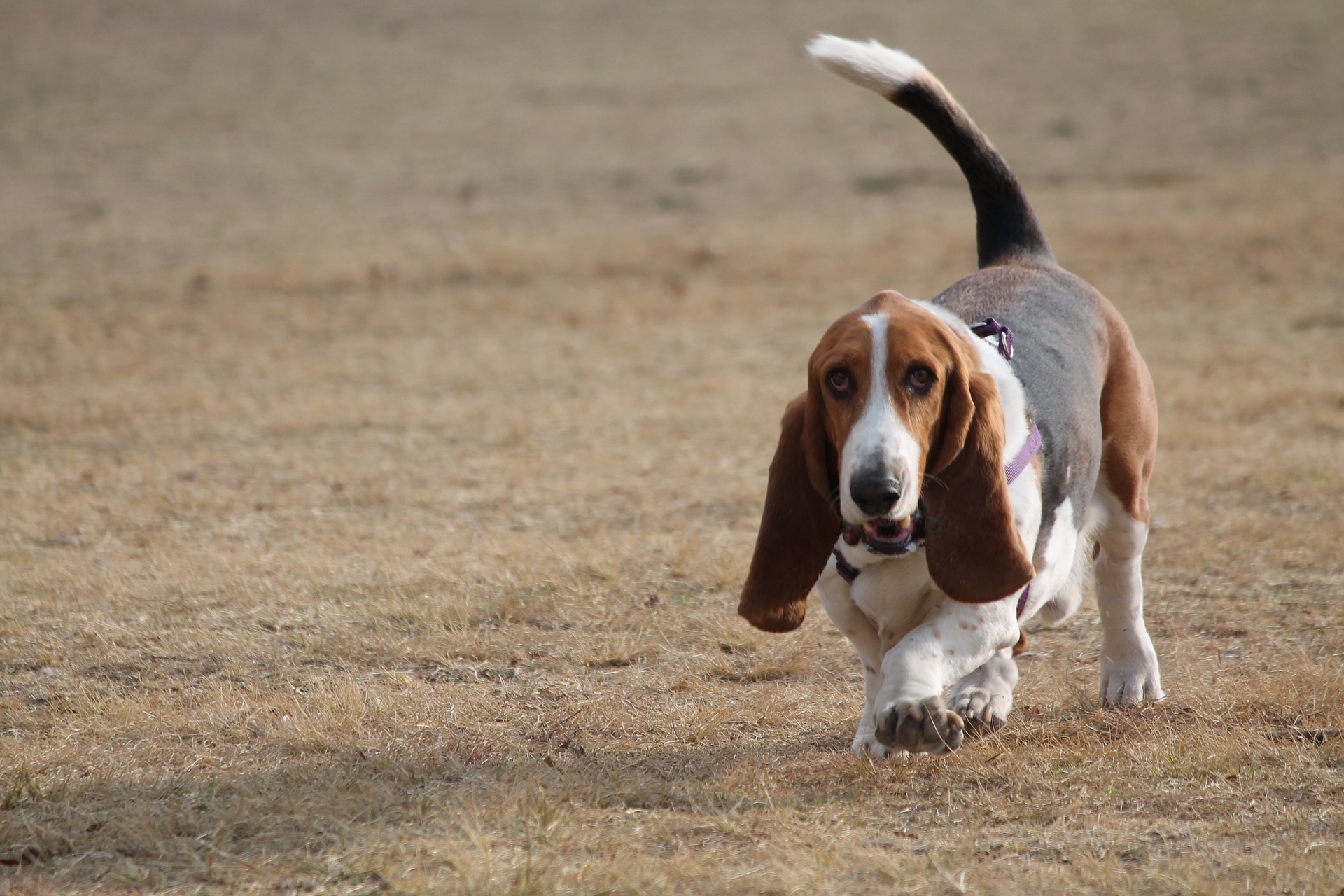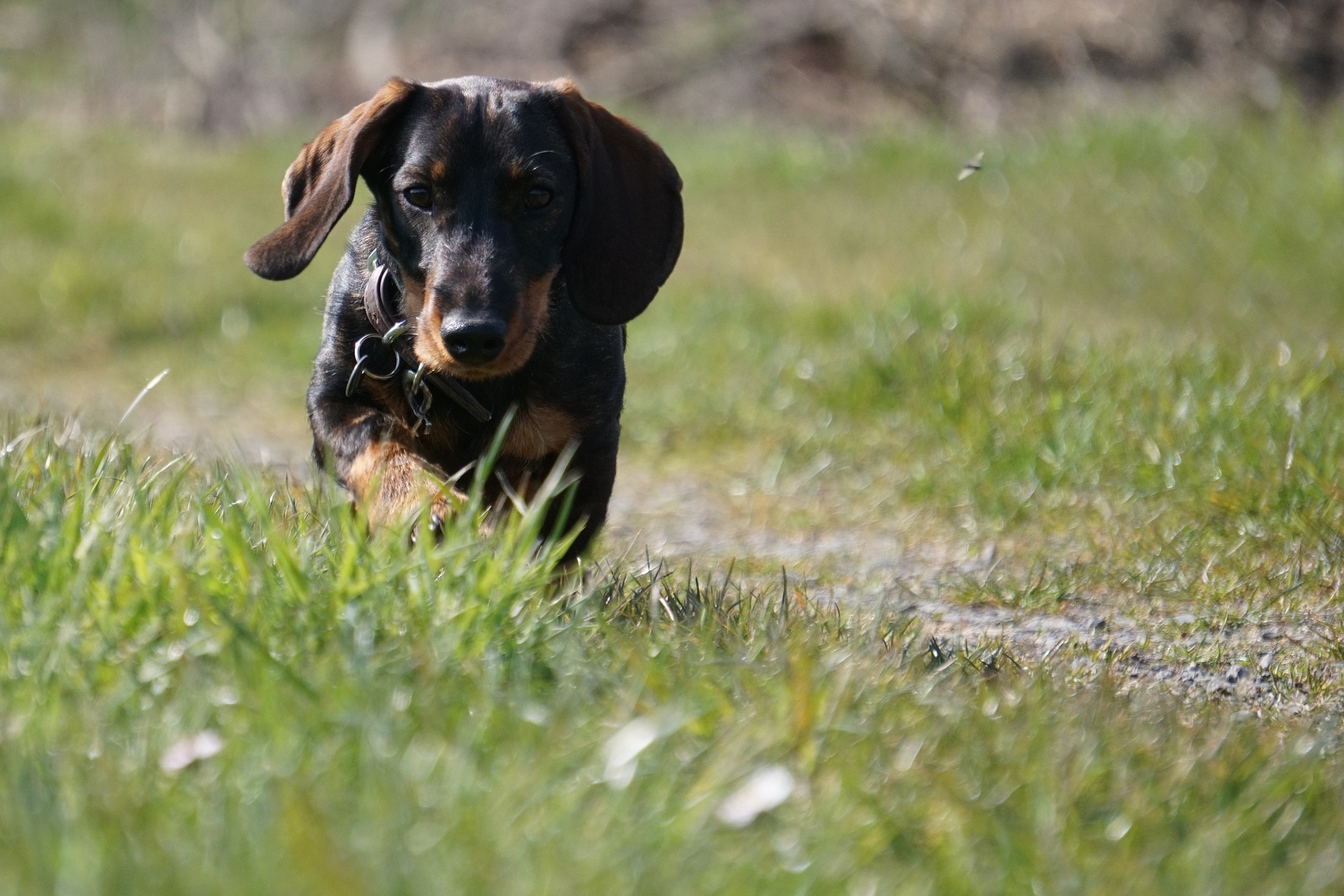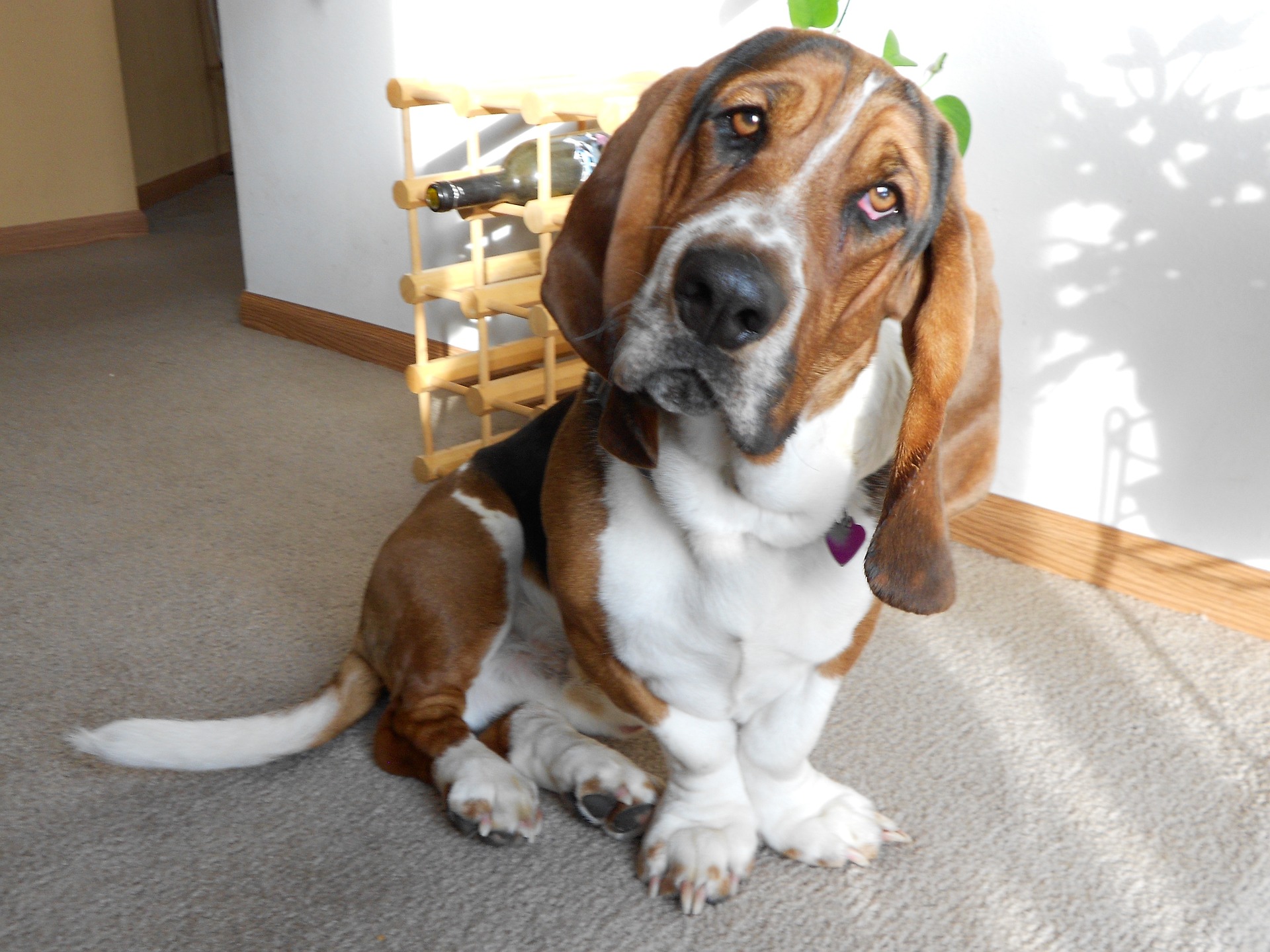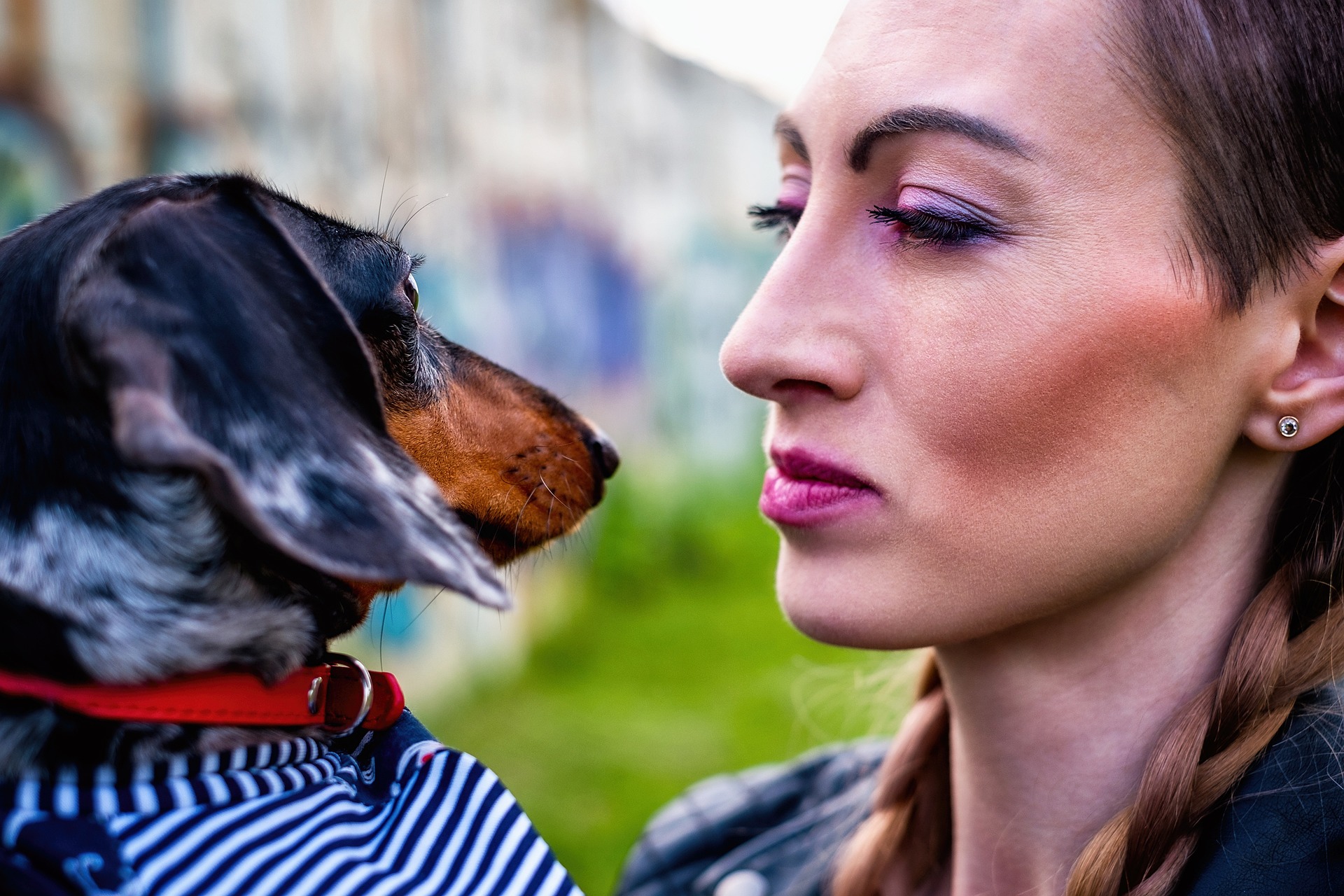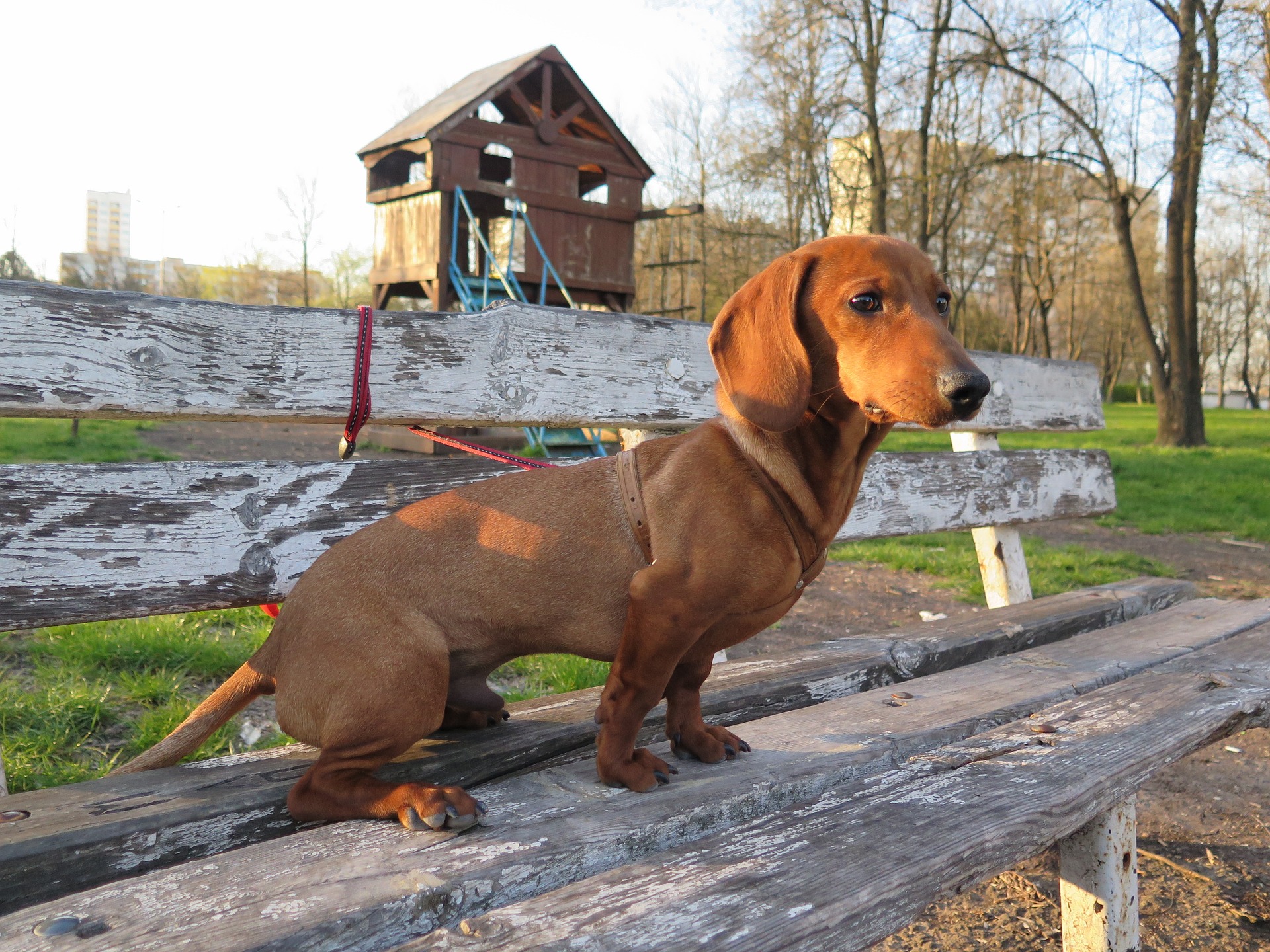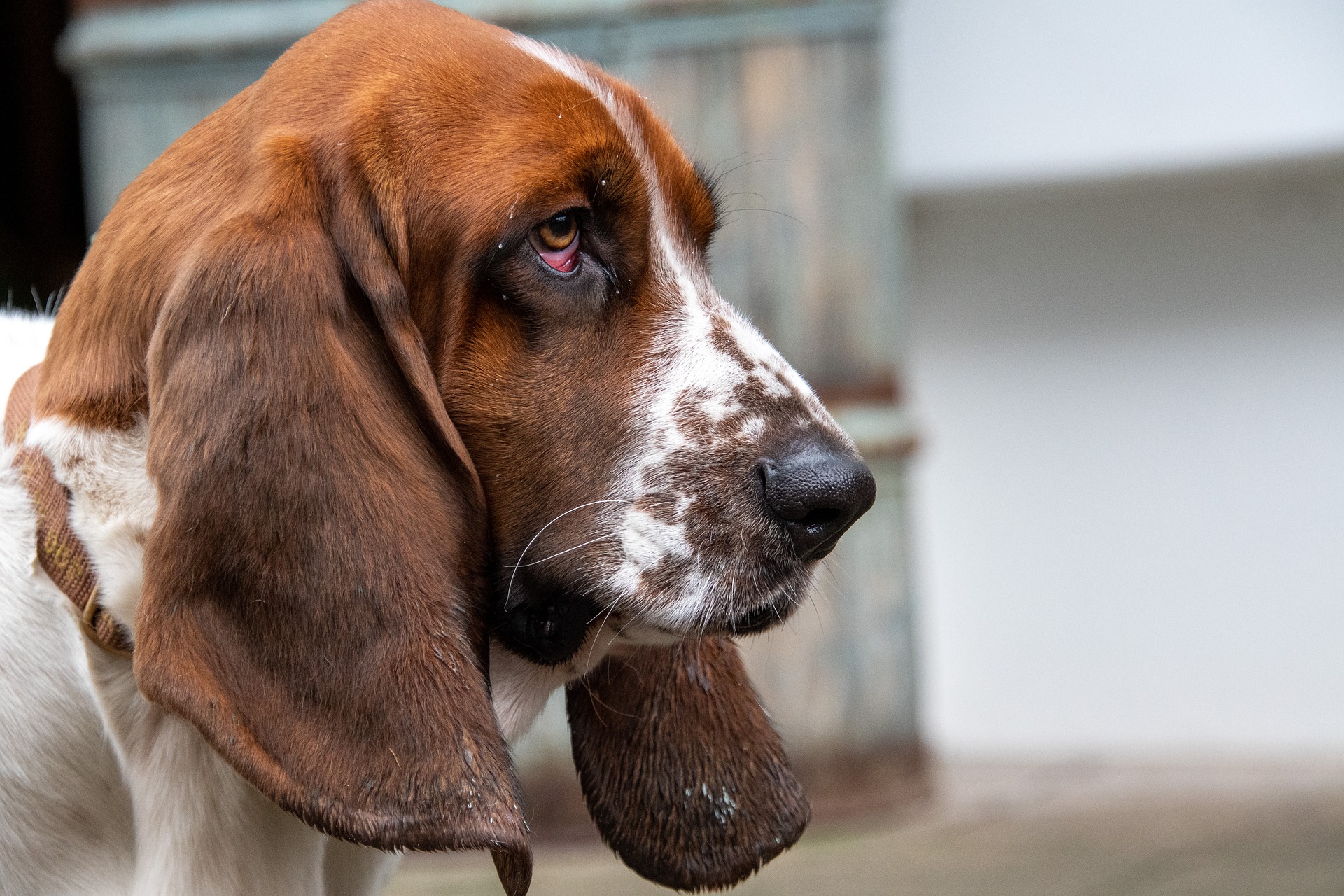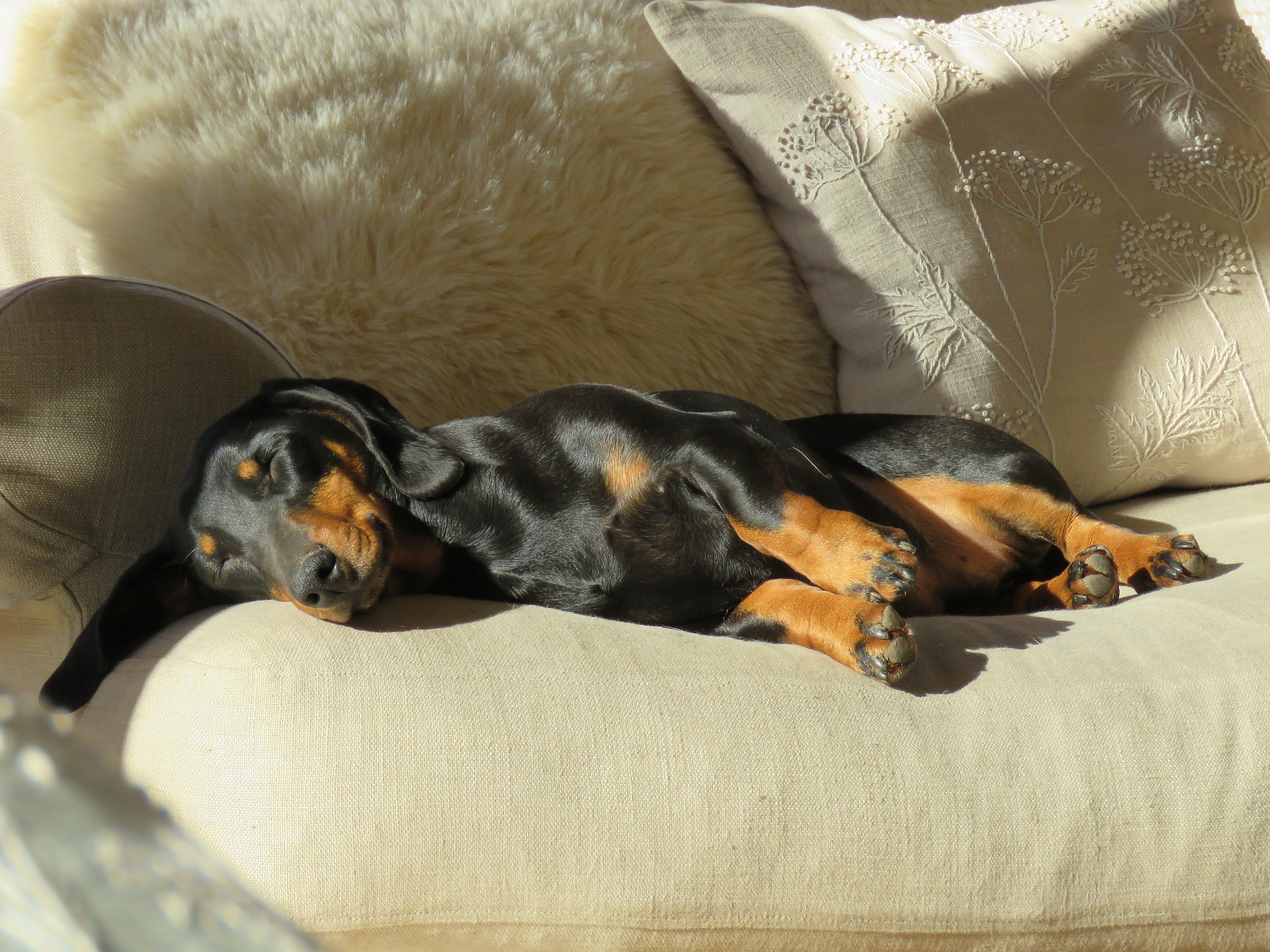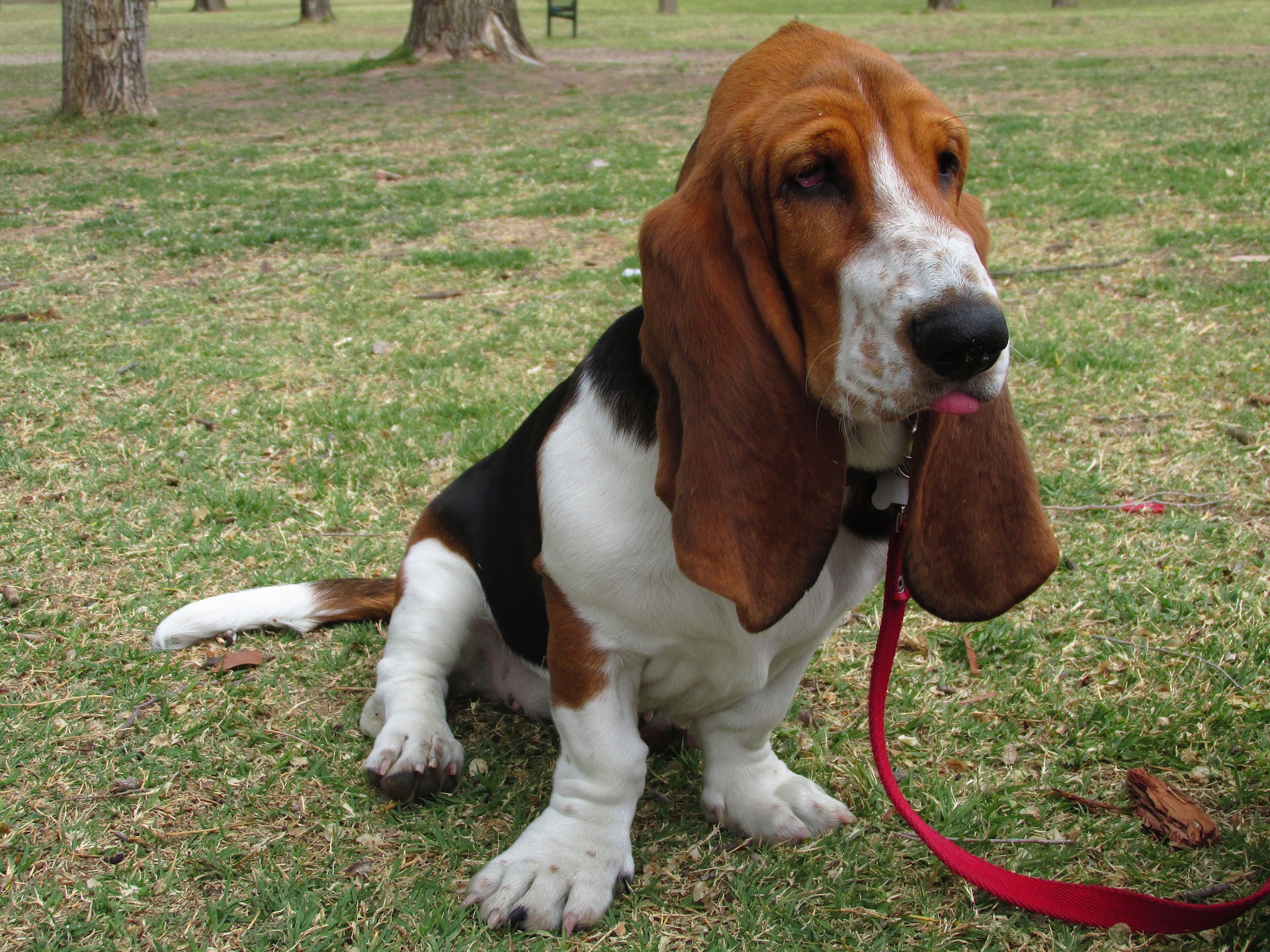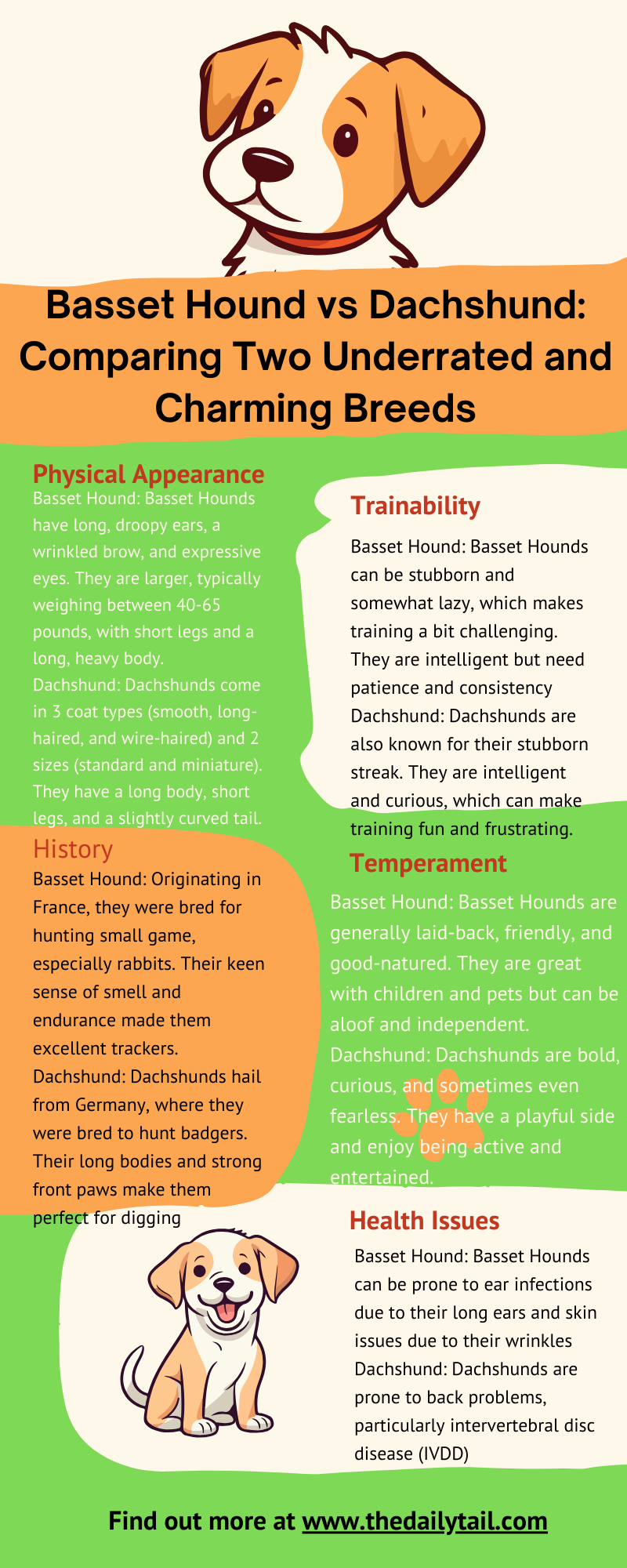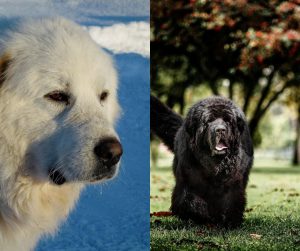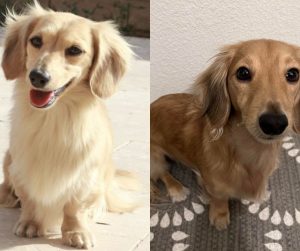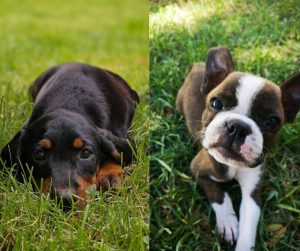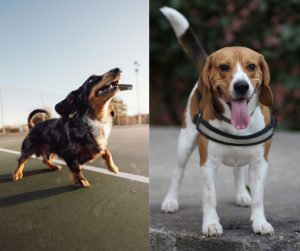When choosing a new furry companion, potential pet owners often find themselves comparing breeds to see which best matches their lifestyle. The Basset Hound and the Dachshund are two breeds that often draw attention for their distinct appearance and endearing personalities. They share some traits, such as their short legs and elongated bodies, but there are notable differences between them that can influence a decision.
Basset Hounds and Dachshunds both have histories as hunting dogs, which explains their keen sense of smell and strong tracking instincts. Basset Hounds are known for being larger and more laid-back, while Dachshunds offer a spirited and slightly more manageable size for first-time owners. Understanding the contrasts in personality, needs, and care between the Basset Hound and the Dachshund is crucial for anyone considering either of these breeds as their next pet.
Today, we will look at the Basset Hound vs Dachshund dog breed comparison.
Key Takeaways
- Basset Hounds and Dachshunds have distinct physical and personality traits despite similar appearances
- Their shared history as hunting breeds contributes to their strong tracking abilities, yet they vary in exercise and space needs
- Proper evaluation of each breed’s characteristics ensures the right fit for a potential owner’s lifestyle
Breed Origins and History
Exploring the rich tapestries of the Basset Hound and Dachshund breeds reveals their storied pasts, each rooted in a distinct European culture with a shared love for expert hunting dogs.
The French Connection of Basset Hounds
The Basset Hound’s journey begins in France, a lineage steeped in the art of scent-tracking. With a name derived from the French words “bas,” meaning low, and “et,” denoting small size, these dogs were crafted to have short legs that facilitated their movement in dense cover while hunting.
These dogs are celebrated not only for their keen sense of smell but also for maintaining breed purity through careful breeding, preserving traits like their long ears and melancholic eyes. French aristocracy highly valued them for their prowess in tracking rabbits and deer.
According to most theories, St Hubert, the patron saint of the hunt, developed the Basset Hound dog breed. The foundation for the breed dates back to 1561. At the time, many people called it the St Hubert Hound. Over the years, the Basset Hound puppy was refined thanks to generations of breeding.
Nowadays, the most closely related cousins to the Basset Hound is the Beagle and the Bloodhound.
The Germanic Roots of Dachshunds
Conversely, Dachshunds have their origins in Germany, where they were affectionately termed “badger dogs,” or “Dachshund” in German. Bred specifically to hunt, they exhibit an elongated body and short stature that allowed them to dig into dens and flush out badgers and other burrow-dwelling animals.
The breed’s history is punctuated by stories of courage, such as the two Dachshunds, owned by Austrian royalty, which were renowned for their hunting capabilities. They have evolved from their utilitarian roles into beloved pets that charm people with their spunky and persistent personalities.
Basset Hound vs Dachshund Physical Characteristics
When one considers Basset Hounds and Dachshunds, it’s easy to get charmed by their distinct and delightful statures. Engaging with their appearances reveals much about their individual breeds, from their size difference to their unique coat textures and colors. The breed standard is set by the American Kennel Club. Both dogs are recognized by the American Kennel Club.
Stature and Size: Height and Weight
Basset Hound:
- Height: 13-15 inches (standard)
- Weight: 40-65 pounds
Dachshund:
- Height: 8-9 inches (standard), 5-6 inches (miniature)
- Weight: 16-32 pounds (standard), under 11 pounds (miniature)
Physically, Basset Hounds are noticeable for their heavier, more substantial build. They carry a dignified presence with a balanced physique that’s low to the ground. Basset Hounds are famous for their droopy ears.
Dachshunds, known affectionately as ‘wiener dogs’, are lighter and smaller in both their standard and miniature varieties. These pint-sized pups are known for their long bodies and short stature. They come in two sizes, standard and miniature.
Coat and Colors: Visual Differences
Basset Hound:
- Coat Type: Short and smooth
- Colors: Commonly tricolor (tan, black, white), also red and white, lemon and white
Dachshund:
- Coat Types:
- Smooth: Short and shiny
- Long: Flowing and slightly wavy
- Wirehaired: Coarser with a soft undercoat
- Colors: Wide range including red, cream, black, chocolate, blue, and various patterns
Basset Hounds keep it simple with their short, smooth coats that make for easy grooming, and their colors usually settle into earthy, tricolored patterns. In contrast, Dachshunds present a dazzling array of coat types and colors.
Whether one prefers the polished look of the smooth, the elegant drapes of the long, or the rugged charm of the wirehaired, there’s a Dachshund to suit their taste. Color-wise, they paint quite the palette, offering options to match practically any preference. The visual distinctions between them are as unique as their personalities, making each breed an engaging visual experience.
Basset Hound vs Dachshund Personality and Temperament
When choosing between a Basset Hound and a Dachshund, understanding their unique personalities and how they interact with families and other pets is vital. Let’s peek into what makes each breed distinctive in their ways.
Temperament Traits
Basset Hounds are known for their calm and laid-back personalities. While they can be a bit stubborn at times, they are generally affectionate and friendly dogs that maintain a steady, even keel. They possess a good-natured temperament that makes them quite lovable.
In contrast, Dachshunds often exhibit a spunky personality packed into their small frames. This breed was originally bred for hunting, which explains their independent streak and stubborn tendencies. They can be playful but also protective of their family, sometimes to the point of being perceived as aggressive if not properly socialized.
- Basset Hound: Calm, Friendly, Affectionate
- Dachshund: Spunky, Playful, Protective, Independent
Behavior with Family and Pets
Both breeds have the capacity to be family-friendly and get along well with children. Basset Hounds exhibit an affectionate nature that extends to their family members and can be considered gentle giants when interacting with children. They also tend to accept other pets in the household, thanks to their non-aggressive demeanor.
Dachshunds, while loving, may require careful socialization to coexist with other pets, especially smaller ones, due to their high prey drive. With family, they’re usually loyal and devoted, but their independent nature means they might not always follow commands. Early and consistent dog training is key to nurturing a well-behaved Dachshund.
- Basset Hound: Gentle with family and pets, affectionate, non-aggressive
- Dachshund: Needs socialization with pets, loyal to family, may be selectively obedient
Health and Lifespan
When deciding between a Basset Hound and a Dachshund, one should consider the health and expected lifespan of both popular dog breeds. They’re known for their charm and distinctive looks, yet potential dog owners should be aware of the health challenges they may face throughout their lives. Both breeds have some overlapping issues as well as breed-specific ailments.
Common Health Conditions
Basset Hounds and Dachshunds share susceptibilities to certain health issues. Obesity is a common concern that can lead to or exacerbate other conditions. They also are prone to ear infections due to their floppy ears which can trap moisture and debris. Here is a snapshot of the health issues both dog breeds may encounter:
- Obesity: Can lead to joint problems and other health conditions
- Ear Infections: Especially prevalent in dog breeds with long, drooping ears
- Intervertebral Disc Disease (IVDD): Affects the spine, more commonly seen in Dachshund dogs
- Bloat: A life-threatening stomach condition, more common in Basset Hound dogs
Breed-Specific Ailments
Basset Hounds and Dachshunds each have their own set of health challenges:
Basset Hound:
- Glaucoma: A condition that can cause pressure in the eye
- Thrombopathia: A blood disorder that affects clotting
- Elbow Dysplasia: A developmental condition leading to joint malformation
Dachshund:
- Patellar Luxation: The kneecap slipping out of place
- Progressive Retinal Atrophy: An eye condition that can lead to blindness
- Deafness: Sometimes hereditary or due to old age
In terms of lifespan, Dachshunds tend to have a slightly longer expectancy, living on average between 12 to 16 years, while Basset Hounds may have a shorter lifespan of about 10 to 12 years. These are averages and many factors such as genetics, diet, and overall care can influence their health and longevity.
Exercise and Activity Needs
When considering a Dachshund or a Basset Hound as a pet, people often wonder just how much exercise these pups need. They’re not your high-energy border collies, sure, but they still have their own unique needs that keep them happy and healthy.
Required Daily Exercise
Dachshunds, with their curious and lively nature, require a good dose of daily exercise to satisfy their energy levels.
A daily walk or some playtime, ideally totaling around 30 minutes, should do the trick. They enjoy a good dig in the yard, so having a bit of outdoor space can be a bonus. However, Dachshunds are adaptable and can thrive in an apartment setting as long as their exercise needs are met.
- Typical daily exercise for a Dachshund:
- Short walks (twice a day)
- Interactive play sessions
- Safe, enclosed yard exploration
Basset Hounds are more on the laid-back side. They do enjoy a leisurely amble and would thrive with about an hour of exercise per day to keep them in shape, fighting off that tendency to gain weight.
While they’re not as high-strung as other breeds, they still appreciate a consistent routine involving walks and sniffing adventures.
- Typical daily exercise for a Basset Hound:
- Longer walks (30-60 minutes)
- Playtime with a focus on scent games
- Access to a yard is nice, but regular walks suffice
Mental Stimulation and Play
Both breeds may not be Olympic athletes, but their minds sure need to stay in tip-top shape.
Dachshunds love to be mentally challenged and are keen puzzle solvers.
Meanwhile, Basset Hounds might be more content with a sniffing activity that engages their tracking instincts.
For Dachshunds:
- Interactive toys like treat-dispensing games
- Obedience training sessions to work their brain
For Basset Hounds:
- Scent tracking activities and games
- Casual play sessions with family members, both indoors and out
Basset Hound vs Dachshund Training and Intelligence
When picking a furry friend, understanding their training and intelligence helps in nurturing a better relationship. Each dog has its quirks, and knowing them can make training a bonding time instead of a challenge.
Trainability and Learning Curve
Dachshunds are bright pups; they pick up on tricks and commands with relative ease due to their sharp intelligence. They were originally bred to hunt, so their learning curve is pretty steep when it comes to tasks associated with their natural instincts—like chasing small animals.
However, their strong will sometimes sees them being labeled as stubborn, which can test one’s patience during dog training sessions.
Basset Hounds, while also intelligent, have a different kind of smarts. They tend to take their time when learning new things, which may give the impression they’re a bit slow to catch on.
This belief couldn’t be further from the truth. They excel in training that respects their independent nature and doesn’t rush them.
Handling Stubbornness and Independence
One can’t discuss trainability without touching on the characteristic stubbornness of both breeds.
For instance, a Dachshund might know a command but choose to ignore it if they’re not properly motivated or if they find something more interesting—like a squirrel they want to chase.
It’s similar for Basset Hounds; their independence can sometimes be mistaken for disobedience.
They’re not innately aggressive or territorial, but they need a confident and patient trainer who can handle their laid-back attitude without misinterpreting it.
Neither breed responds well to harsh training methods. They much prefer positive reinforcement—think treats, praise, and playtime.
Firm yet gentle guidance works best, keeping in mind that every dog is an individual with their own personality and preferences.
Care and Maintenance
When bringing a Basset Hound or Dachshund into your family, understanding their care and maintenance needs is crucial for their well-being. Both breeds require specific attention to grooming and diet to keep them healthy and happy.
Grooming Necessities
Basset Hounds and Dachshunds have distinct grooming needs due to their different coat types.
The Basset Hound has a short, dense coat that sheds moderately throughout the year. Regular brushing, about twice a week, should suffice to keep their shedding under control.
Their long ears need to be checked and cleaned regularly to prevent infection, and they can be prone to drool, so a quick face wipe might often be needed.
Dachshunds, on the other hand, come in three coat varieties: smooth, long, and wire-haired.
Smooth-haired Dachshunds require minimal grooming, while long-haired ones need regular brushing to prevent matting. Wire-haired Dachshunds may require professional grooming to strip their coats.
Both breeds can bring in dirt and debris due to their low stature, so they might need the occasional bath. Keep in mind those little claws – nail trims are a necessity to avoid overgrowth and discomfort.
| Breed | Shedding | Grooming Frequency | Special Attention |
|---|---|---|---|
| Basset Hound | Moderate | Twice a week | Ears, drool-wiping |
| Dachshund | Coat-dependent; Smooth: Low, Long/Wire: Moderate | Smooth: Rarely, Long/Wire: Weekly | Nail trims |
Diet and Nutrition
Both breeds do well on high-quality dog food, but given their body shapes and potential for back issues, it’s important to monitor their diet closely to prevent obesity.
Basset Hounds and Dachshunds are known for their hearty appetites and can easily overeat if given the chance. Measure their food, and stick to a feeding schedule.
Basset Hounds may require a bit more food than Dachshunds due to their larger size, but it’s the quality of the food that counts.
Avoid giving them table scraps, as they can lead to digestive issues and allergies. Treats should be given sparingly to avoid weight gain.
For specific dietary needs, consult with a veterinarian. They can provide personalized recommendations based on the individual dog’s age, weight, and activity level.
Keep an eye out for any allergic reactions to new foods as both breeds can have sensitivities.
| Breed | Daily Food Intake | Considerations |
|---|---|---|
| Basset Hound | Adjust according to size, age and activity level | Monitor for obesity |
| Dachshund | Measure food, maintain regular feeding schedule | Allergy awareness |
Living Environment
When deciding on a dog, considering where they’ll thrive is just as important as their cute little faces. Both Basset Hounds and Dachshunds bring unique needs to their living environments, and understanding these can lead to a happier, tail-waggier life for both the pup and its human.
Adaptation to Living Spaces
Basset Hounds and Dachshunds may be similarly stubby-legged, but their adaptation to living spaces varies.
Basset Hounds, with their easy-going nature, can do well in larger indoor spaces and flourish when they have a yard to roam. They can adapt to apartment living; however, they appreciate a good sniff and meander outdoors, and without that, they may voice their boredom—not ideal for close-quarter living.
Dachshunds, on their part, are smaller and can fit more comfortably in an apartment.
They’re famously curious and can be quite active indoors, snuffling around every corner. Their smaller stature doesn’t mean they don’t need exercise—but they might be more manageable without access to a yard compared to their Basset cousins.
Managing a Hound in an Apartment
Let’s talk about keeping these hounds happy in an apartment, which is a definite possibility with the right approach.
A Dachshund can adjust pretty well to apartment living if they get adequate activity—think daily walks and play sessions to keep those tiny legs moving.
A Basset Hound, though lazier, might need a bit more persuasion to get moving but a regular walk schedule is key to keeping them fit and preventing that dreaded separation anxiety from setting in.
In terms of vocal tendencies, Basset Hounds are known to be more vocal, which may require some extra training to ensure they’re neighbor-friendly.
Dachshunds can be barkers too, especially when they spot a squirrel from the window or get a whiff of another dog in the hall.
Whoever ends up sharing your apartment, it’s important they get along with cats or other animals in the home. Both breeds often possess a high prey drive, so introductions should be managed carefully.
Choosing the Right Breed for You
When picking between a Basset Hound and a Dachshund, potential dog owners should consider their lifestyle and the specific attributes of each breed to ensure a harmonious match.
Comparing Lifestyle Compatibility
Family-Friendly: Both breeds are known for being loyal and affectionate, making them great companions for families. The Basset Hound and Dachshund tend to be good with children, although their playfulness requires supervision with smaller kids to prevent accidental injuries.
Living Space: Dachshunds adapt well to apartment living due to their size, and while Basset Hounds are larger, they too can adjust to smaller living spaces. Importantly, neither breed demands intense daily exercise, but they’ll both appreciate a good walk and playtime.
Protection and Watchdogs: If one is looking for a watchdog, both breeds have strong territorial instincts and will alert their owners to strangers, with the Basset Hound’s deep bark being quite noticeable. However, their friendliness doesn’t make them the most effective guard dogs.
Exercise Needs: Individuals with active lifestyles may find the Dachshund’s lesser need for exercise appealing, but those who enjoy more outdoor activities may prefer the Basset Hound’s slightly higher exercise requirement. However, both breeds should have regular opportunities to satisfy their natural instincts of tracking and sniffing.
Cost and Breed Availability
Price: These breeds can vary in price depending on lineage and location. Generally, Dachshunds are slightly less expensive than Basset Hounds. However, prices can be similar for pets of comparable quality.
Popularity and Breed Type: The Dachshund is a small to medium-sized hound with a long back and short legs, which has made it a consistently popular breed. Meanwhile, the Basset Hound, recognized for its distinctive look with a heavier build and pronounced droopiness, may not be as widespread but still holds a beloved place in many hearts.
Breed Availability: Both breeds are widely available, but their popularity may affect their availability in certain areas. The prospective owner should research local breeders or adoption centers to understand the accessibility of each breed.
In considering the right breed, one must weigh these factors carefully. Whether one’s preference tilts towards the intrepid and compact Dachshund or the amiable and laid-back Basset Hound, it’s essential to align the choice with one’s lifestyle to nurture a lasting companionship.

